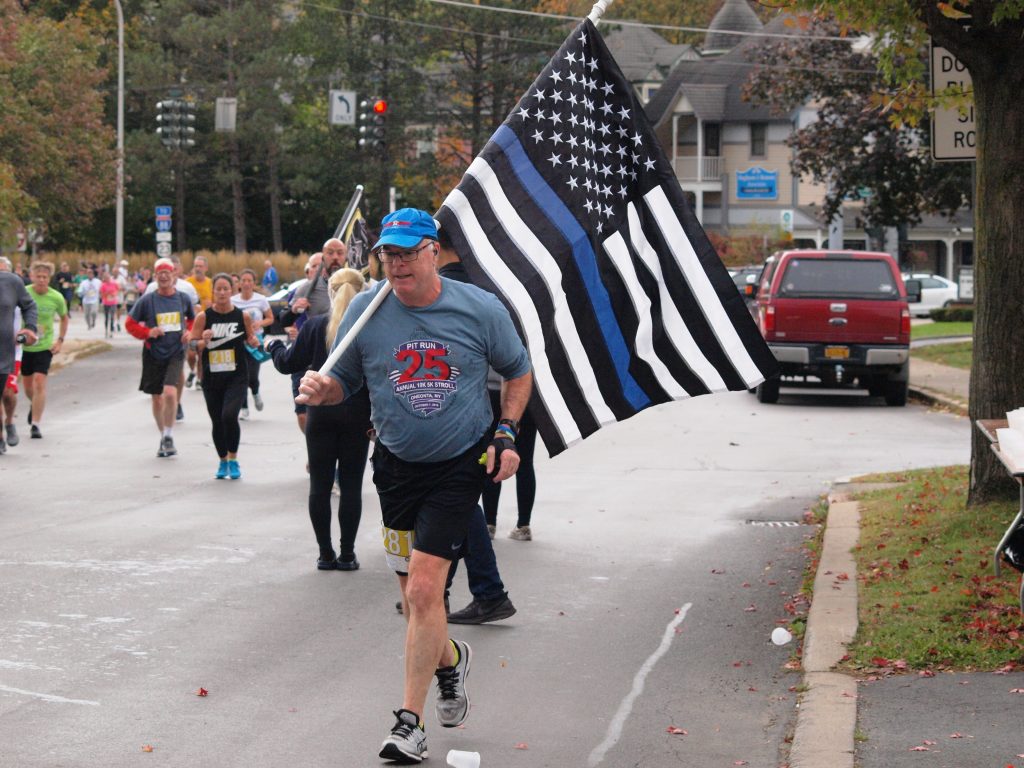
It’s difficult to conceptualize just how prevalent the Blue Lives Matter movement has become in America, despite lacking the same fundamental rationality as other adjacent social revolutions. In the wild, we see glorious blue flora bloom, an array of differently blue-hued fauna swim, fly and dash around on our beautiful blue planet — but alas, evolution has yet to manifest its first blue human being. The blue color so famously correlated with the police force is not for their magnificent, Avatar-esque blue skin, but a uniform that can be easily removed at the end of the day. In essence, “Blue Lives” cannot possibly equate to those of black lives.
Whereas the police can straightforwardly change their wardrobe, it’s not as simple a solution for people of color. Unlike the most frequent casualties of their brutality, police officers can not only effortlessly disguise themselves, but they consciously choose their occupational paths. The fictitious foundation of the Blue Lives Matter movement equates an occupation to a racial identity. This unfairly results in privileging the civil rights of the authoritative role of the police over those intrinsic to humankind. Besides undermining the plea for equality before the law and society that the Black Lives Matter movement champions, the Blue Lives Matter countermovement has fractured America under reductionist falsehoods. They perpetuate the dangerous conception that the Black Lives Matter movement is an anti-police group, and that there’s an inherent trade-off between improved community-police relations, the sanctity of civil rights and protection of law enforcement.
America has a long history of police brutality. With fatality rates increasing fairly steadily since the 2000s, the number of deaths of African Americans at the hands of police have reached historic highs. Spawned during the first year of the Trump administration, police use-of-force has now become the sixth-leading cause of death for young black men. Despite the media frenzy surrounding the recent conviction of former Dallas police officer Amber Guyger for the murder of Botham Jean in his own apartment, the case stands as an exception to the norm regarding police brutality convictions. Although each year police kill anywhere from 900 to 1,000 people, since 2005, only 35 officers have been held accountable through convictions. Such inequalities embedded in our criminal justice system enforce the systematic assault on the lives of people of color specifically, becoming leading factors in the formulation of the Black Lives Matter movement.
Rising in response to the Black Lives Matter movement around 2014, the “Blue Lives” revolution has since deeply penetrated America’s psyche. Founded on a self-proclaimed need for the united position of law enforcement against Black Lives Matters’ goals, there stands a disconnect between the civil rights group’s purpose and the hollow nature of officers’ intentions. On top of the pitiful mechanisms withholding officers’ accountability, the police are already one of the most protected groups in our society. With ample privileges following court rulings in the institution’s favor, their protection is further prioritized over the everyday man through state and congressional legislation.
Following the lead of independent state bills increasing the penalties against those who harm officers, the Protect and Serve Act of 2018 overwhelmingly passed with bipartisan support in Congress to comprehensively make offenses against law enforcement a federal crime. Placing the defense of police within a hate crime framework, it equates a voluntarily chosen career path with the immutable traits of human existence. The “Blue Lives” countermovement’s powerful influence on the country’s first, greatly tone-deaf bill constitutes the undeniable privileging of the institution’s cries to action. Shifting the mainstream’s focus to hostilities against the police instead of those perpetrated by the police, the movement has reduced Black Lives Matters’ fight for civil rights as an all-out war against the police that jeopardizes officers’ lives. This incorrect interpretation discredits efforts for racial justice and produces disproportional legal protections, further fabricating a dichotomous narrative in which the protection of black lives and police officers’ can never coexist.
The consequences of police efforts to protect themselves, justified in their eyes as a time where police work is so very life-threatening, are multidimensional. These effects became noticeable during the Charlottesville protests, where the Blue Lives Matter flag waved alongside the Confederate classic amid a sea of white supremacists. Although the conflation of a symbol posed as police pride with that of white nationalism was quickly condemned by the proponents of Blue Lives Matter, it’s difficult to support a position of unforeseen ignorance. With an atmosphere already polluted with racial tensions, the events at Charlottesville followed months after publicized support of “Blue Lives” from President Donald Trump. Such a favorable stance from the leader of the free world sanctioned the conception of two sides in opposition, while bolstering the group’s national representation.
The conception of a national “Blue Lives” identity is aided by the countermovement’s emblem: a reinterpretation of the Thin Blue Line flag. The new image has a simple blue line against a blackening of the most patriotic American symbol of all: the American flag. Against the backdrop of the American flag, any condemnation of the police is not only one against their actions or the general institution, but of a sacred American bastion. Criticisms of the police, however pushed by the Black Lives Matter movement and its supporters, then becomes viewed as ostensibly un-American.
The Blue Lives Matter movement principally manufactured the haphazard “us versus them” narrative, which has triggered an imbalanced protection of an occupation over the fundamental rights of minorities. The “Blue Lives” in our country operate with such supremacy that it enables dangerous ideologies and soundly guarantees to reproduce further fatalities and turmoil.
Miranda Jackson-Nudelman is a junior majoring in political science.



